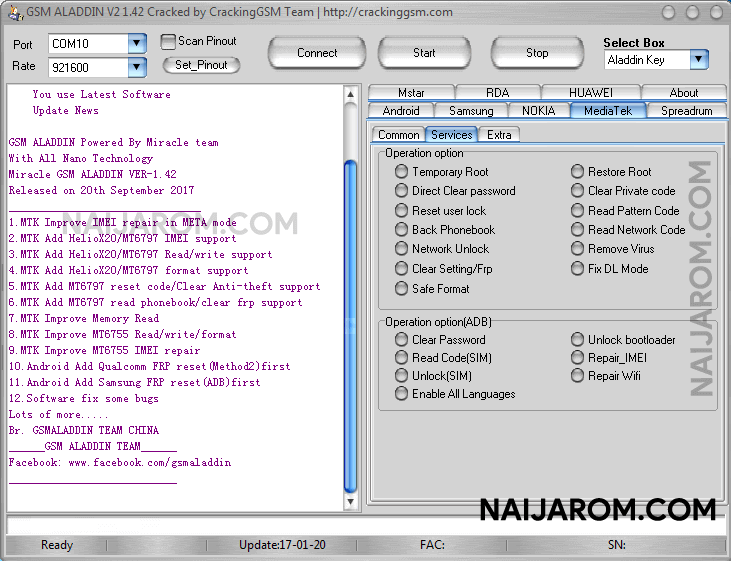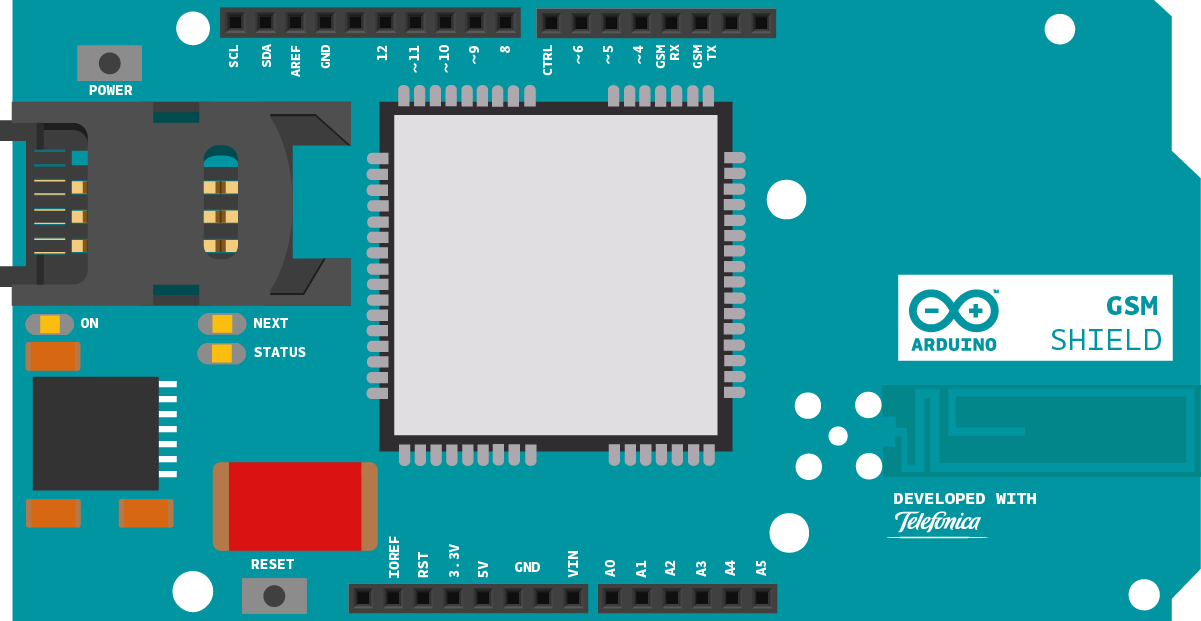Gsm Code Crack
A team of Israeli scientists have uncovered a possible means of cracking the GSM mobile phone network encryption code, opening the door to attacks that could enable. Registration code. Wondershare video. Wondershare video editor serial key and email; MOBILE USE AN ID-BLOCKING CODE; MOBILE USE AN ID-BLOCKING CODE.
Prague, 15 April 1998 (RFE/RL) - Computer security engineers in the United States say they have 'cloned' a digital cellular telephone in a way that eventually could allow criminals to make free calls at the expense of legitimate users. The researchers say the fault they found in the so-called GSM encryption system also suggests that the code was deliberately weakened to allow government surveillance of calls on digital mobile phones. The announcement has cast fresh doubts on claims by major telecommunication firms that their GSM services are tamperproof. GSM is the world's most widely used encryption system for cellular telephones. About 80 million cellular phones currently rely on GSM encryption. GSM also has been growing in importance in Central and Eastern Europe during the last five years. The European Bank for Reconstruction and Development (EBRD) says cellular phones have been vital to the development of business, because of long waiting times for access to landline-phone networks.
Reports also suggest that GSM use has become common among organized crime syndicates in Central and Eastern Europe. In Russia, GSM has been promoted by firms like US West Inc. As a safe alternative to the older analog mobile phones. The analog system has been attacked by computer hackers, who discovered a way to extract and 'clone,' or replicate, a caller's security code through the airwaves, while a call was being made. But, unlike the fault in the analog system, the GSM code crackers say they must first possess a GSM subscriber's phone in order to copy his identification code.
They say the code can be taken from the so-called SIM card, a device shaped like a credit card inserted into a GSM phone that identifies each customer to the telephone company when they make a call. David Wager, a 23-year-old graduate student at the University of California at Berkeley who helped crack the GSM code, says once a SIM card has been copied, its information can be stored on a computer or a simple hand-held electronic organizer. He said that when the computer is connected to a phone, the cellular network interprets the calls as being made by an authentic customer. The New York Times says the most intriguing development is speculation that the GSM code may have been intentionally weakened to allow government agencies to eavesdrop on cellular telephone conversations.
The key to the GSM code is a 64-bit encryption system that normally would be very difficult to decipher. But the researchers at Berkeley say they've discovered that the last ten digits of the code were all zeros. Marc Briceno, director of a computer programmers' organization called the Smartcard Developers Association, says the weakened code could allow the powerful computers of national intelligence agencies quickly to decode a GSM conversation.
Briceno says he can think of no other reason that the code would have been intentionally weakened. The New York Times report says rumors are common within the computer industry about encryption designers, who have been persuaded or forced by government agencies to weaken communications security systems or to install secret 'backdoors' (access). But, other than the recent hints of an intentionally weakened system, there has been little evidence to support speculation that the U.S. Government has been involved in such efforts.
The New York Times quotes industry experts as saying that the GSM algorithms are thought to have originated in either Germany or France, rather than the United States, in 1986 or 1987. Nevertheless, details about the origins of the system remain hazy. Meanwhile, executives in the cellular telephone industry say the newly discovered flaw in the GSM system actually reinforces their claims about the security of digital cellular phones.
George Schmidt, the president of the U.S. Firm Omnipoint Communications, emphasized that there is not a way to extract GSM codes from the airwaves during use. Schmidt says the integrity of the GSM system has not been damaged and the GSM phone users are not at risk.
Theoretically, GSM has been broken since 2003, but the limitations of hardware at the time meant cell phone calls and texts were secure from the prying ears of digital eavesdroppers and all but the most secret government agencies. Since then, the costs of hardware have gone down, two terabytes of rainbow tables have been published, and all the techniques and knowledge required to listen in on cell phone calls have been available. The only thing missing was the hardware. Now, with a super low-cost USB TV tuner come software defined radio, for cracking GSM with thirty dollars in hardware. Previous endeavours to used fairly expensive software defined radios – USRP systems that cost a few thousand dollars a piece.
T Mobile Gsm Codes
Since the advent of RTL-SDR, the price of software defined radios has come down to about $30 on eBay, giving anyone with a Paypal account the ability to listen in on GSM calls and sniff text messages. The process of cracking GSM first involves getting the TMSI – Temporary Mobile Subscriber Identifier – a unique ID for each phone in a certain cell.
This is done by sending a silent SMS that will send back and acknowledgement an SMS has been received on the victim’s phone, but won’t give the victim any indication of receiving a message. From there, the attacker listens to the GSM signals in the cell, receiving bursts attached to a TMSI, and cracking the encrypted stream using 1.6 TB of rainbow tables. domi put up a four-part tutorial series (part 1 above;, and ) that goes over the theory and the actual procedure of cracking text messages and voice calls with a simple USB TV tuner.
There are a few limitations; the attacker must be in the same cell as the victim, and it looks like real-time voice decoding isn’t yet possible. Cracking GSM for $30, though, that’s good enough for us. Posted in, Tagged, Post navigation. No, but in practical terms, if it keeps the skript kiddies out, it’s a whole lot less chaos. It seems like, in cases of stuff that’s extremely clever, like this, the real geniuses write the software, then the also-rans write front-ends that put it into the hands of monkeys.
Inconvenience isn’t a philosophy to rely on, but in the period between a crack and a fix it’s probably the best we have. Since GSM’s had this hole since 2003, I’m a bit surprised they haven’t fixed it. I know it’s a fairly basic flaw, but if they’d added on some extra optional standard, and kept the old flawed mode for compatibility, by now the problem would have been solved. Tho I’m sure there’s some reason they didn’t do this that I don’t know about.

My phone’s 3G anyway. Do they use GSM for voice? GSM’s had the hole from the beginning, because they used roll-your-own crypto (and set a bunch of the key bits to zero as well, probably because of political pressure.) It got discovered when somebody gave Ian Goldberg (a crypto grad student at Berkeley) a copy of the crypto code to evaluate.
He took a look at it over lunch time, and it took three hours to crack instead of two because the Chinese restaurant was having the good lunch special that day instead of the boring one. Analog cell phones were still around (no crypto), and the Qualcomm CDMA systems had a trivial crypto algorithm because of political pressure (including the threat to deny them import and export permissions if they didn’t cooperate.). Mmm, it’s a nice reminder than GSM is completely insecure but: – There is nothing new here.

Even the software he use haven’t been written by him and they’ve been public for years and demonstrated at various conferences for. The only new piece of software is the ‘silent sms’ app he wrote for android but even that’s only an implementation of a small part of the attack presented at 27C3 ( ). – There are several innacuracies and technical errors in the write up. – He also pretty much “skipped” the hacking part, he just recovered the key from his own SIM in part4, no cracking there. – There are other pieces missing in the write up that make the described attack unlikely to work on a real network (AMR codec and hopping come to mind).
To be clear, those are cracked too and have been for a while (with practical demo showed), they’re just “skipped” in this blog post. It’s actually not.
Selling or importing a device that has the ability to listen to those frequencies is what’s illegal. Being in possession of such a device, though, is not illegal (i.e., you can build your own scanner that receives cell frequencies). Actually using it is not illegal, either, but attempting to break the encryption on the received data is illegal.
Also, it only covers a narrow range of frequencies that were used for AMPS. Modern cell phones can and do use frequencies outside that band. It would be impossible to confiscate and enforce restrictions on people’s ability to intercept or monitor anything over the air. A simple crystal detector set can be placed in a close enough proximity to couple and demodulate a targeted signal, if you are close enough to the transmitter, and if one does a little research on the subject, other equipment on the surplus markets and scanner radios are also easy to modify, so it is futile, and the strong language written into legal agreements is put there for the most part to discourage those without proper training/knowledge to attempt it.
Monitoring of any and all frequencies is not illegal, as per the original 1934 US Communications Act, which established the FCC and gave it domain over the operation of all the radio spectrum, commercial broadcasting and the telephone companies. What is illegal and what you get in trouble for is taking information from the conversation or data being monitored either content of conversations, and attempt to exploit the information for monetary or other personal gain. You can however be prosecuted under other international/federal/local and state laws or codes, regarding violations of privacy or intruding on the ability of the system/network owners ability to do business, or reduce customer access or otherwise cause harm to the operation of their normal business.

People have also been prosecuted for using information to speculate in the stocks and bonds markets for instance. If I’ve understood correctly, the cheap SDR’s(such as the RTL-SDR) doesn’t have enough bandwidth to capture several channels, so if the cellular network uses channel hopping(which is pretty standard), capturing voice is close to impossible. SMS shouldn’t be much of a problem though, provided they are using unencrypted SMS (most providers are). However, other SDR’s do have enough bandwidth to capture all GSM channels. I don’t quite think HackRF has enough bandwidth, but some USRP models does have.
When you have all channels captured, and you have cracked the key, it’s just a matter of applying the key to the call across all channels. Channel hopping in GSM is by no means a security measure, but it does ensure that attackers need a more hefty investment than 30$. As usual, the guys with the most expensive toys gets all the fun.